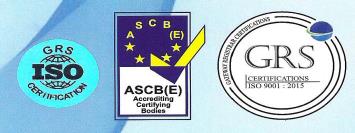International Convention on Load Lines
Adoption: 5 April 1966; Entry into force: 21 July 1968
It has long been recognized that limitations on the draught to which a ship may be loaded make a significant contribution to her safety. These limits are given in the form of freeboards, which constitute, besides external weathertight and watertight integrity, the main objective of the Convention.
The first International Convention on Load Lines, adopted in 1930, was based on the principle of reserve buoyancy, although it was recognized then that the freeboard should also ensure adequate stability and avoid excessive stress on the ship’s hull as a result of overloading.
In the 1966 Load Lines convention, adopted by IMO, provisions are made for determining the freeboard of ships by subdivision and damage stability calculations.
The regulations take into account the potential hazards present in different zones and different seasons. The technical annex contains several additional safety measures concerning doors, freeing ports, hatchways and other items. The main purpose of these measures is to ensure the watertight integrity of ships’ hulls below the freeboard deck.
To Get Familiar With Its Measures Or If You Want To Enhance Your Ability In Maintaining The Proper Implementation Throughout Operational Life Of Your Good Fleet , Please Don’t Hesitate And Request Our Training Service.





